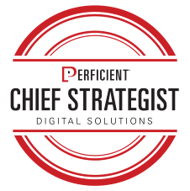At Sitecore Symposium 2018, Linda Baker and Christina Deno from Wyanoke Group and Healio.com talked about how they used natural language processing, semantic tagging and machine learning to enhance the medical content that their company produces.
Wyanoke Group provides education and communication services to the healthcare industry. Healio.com is a clinical news, information and education website designed exclusively for specialty health care professionals. Built on a powerful web platform, Healio provides physicians and other health care professionals with personalized content based on their needs and areas of interest.
The Problem
Proper attribution of content metadata would allow for a better experience for the healthcare professionals who rely on the medical content produced by Healio. You can imagine when a physician searches for a topic, it would be a bad experience if key articles were missing from the content.
With 200K+ pieces of content in Sitecore, they found that it was a daunting task to expect humans to properly, consistently, and uniformly associate accurate metadata and tie various content together. The old tagging solution connects topics to content that they produce through well define keywords, taxonomies, thesaurus and ontology. They use taxonomy to provide a hierarchy of medical terms. A thesaurus provides synonyms that allow further meta data alignment to content. Finally, they used ontology triples to associate content with topics. But with over 100,000 articles, it’s tough for authors to manage all the tagging, meta data, associations, synonyms, etc. Still, it was critical to solve this problem for their customers.
Topic Tagging
Healio decided to apply machine learning and natural language processing to this problem. Semantic tagging is the process of attaching add’l information and concepts to a text document. These tags become the source of easy to interpret information. For medical content, semantic tagging is tough because of the complexity of the words and concepts.
Using Open Calais (opencalais.com), Healio was able to correctly semantically tag medical content. Then they were able to tie MeSH terms to the semantically tagged content that associated topics to the content. (MeSH terms are 300,000 medical terms in PubMed.)
The results
Topic tagging helped to discover related content, focus on topics, and for a news organization, provided the ability to create new products.
Tie to Social Media
Now that content is tagged and connect to MeSH, the search capabilities allow physicians to connect content to social media, like Twitter. So a topic search now brings in more connected content and provides a much better experience for healthcare people using Healio.com.
Benefits to Healio
In addition to the improvement of the experience to their customers, Healio was able to see internal benefits such as reductions in authoring time, typos, and duplicates. It also helps them improve keyword relationships, order of importance, and up-to-date data.
Meta Data Explosion in a Good Way
Before they implemented this technique, they had a catalog of 600 tags that could be applied to content. This made it easier for the authors, but not for the customers. After the topic tagging was put in place, content is automatically tagged from a catalog of 81,000 tags. That makes the content available to a much broader set of searches and allows researchers to find content that might not have been tagged correctly with the old process.
More Personalized and Better Engagement
The new tagging process also allows Healio to recommend additional content, course, etc. to users. Previous to the implementation, they would get about 300 additional engagements through their recommendations. After the tagging implementation, they were able to generate more personalized recommendations and more than doubled the engagement after just one month.
How to get started
Don’t focus on the technology, focus on the user’s experience by asking these questions:
- How are users interacting with your content?
- What tasks are they trying to accomplish?
- At what point does content recommendation make sense?
- Do you have relevant content or related topics?
Linda Baker’s final advice: “If you solve a need for your customer, you are more likely to create successful features and products.”
